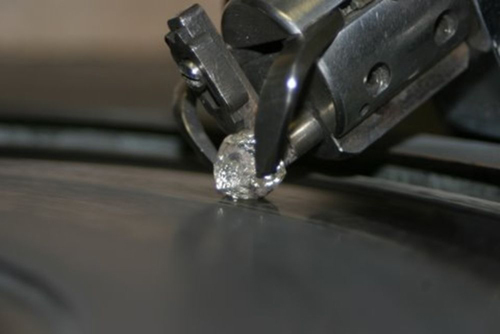
The companies that make synthetic diamonds pitch them as an ethical, conflict-free, and frequently cheaper alternative to diamonds produced the old-fashioned way—letting the Earth's mantle provide the pressure and temperature over time

The companies that make synthetic diamonds pitch them as an ethical, conflict-free, and frequently cheaper alternative to diamonds produced the old-fashioned way—letting the Earth's mantle provide the pressure and temperature over time, and mining the results. But some jewelry experts have pushed back against these points, arguing ethical diamond mining can boost local economies and that synthetic diamonds are not that much cheaper. Regardless, the production of synthetic diamonds is a major scientific feat that's only become available in the past 60-some years.
The first commercially available artificial diamonds were created in 1954 by General Electric using high-pressure and high-temperature (HPHT), just like natural diamonds are deep underground. However, diamonds created using HPHT are usually tinted and flawed, generally limiting such diamonds to industrial applications.
Instead, commercially available gem-quality synthetic diamonds are nowadays typically made using a process known as chemical vapor deposition (CVD). This method differs greatly from natural diamond formation, with diamond growing from a heated mix of hydrogen and a hydrocarbon gas, such as methane, at very low pressures inside a vacuum chamber.
The first diamonds produced using CVD were very tiny, says Wuyi Wang, director of research and development at the Gemological Institute of America. But by the 1980s, scientists figured out a way to use CVD to manufacture diamond films, and in the 1990s, researchers finally discovered a method to use CVD to create gem-size and gem-quality diamonds.
One key behind this advance with CVD "was using a diamond crystal as a seed for diamond to grow on top of," Wang says. "Previously, silicon was used to seed diamond crystallization with CVD. Silicon has larger atoms than carbon, and so this mismatch could introduce problems into diamond formation."
Another factor in this breakthrough was the discovery of the optimal gas mixtures and temperatures for gem-quality diamond growth, Wang adds.
"This is going to change the diamond market."
The CVD process can now grow diamonds up to about 4 carats in size with very good clarity, Wang says. The market for CVD diamonds is also growing rapidly. Wang says that Gemesis, currently the world's leading supplier of gem-quality synthetic diamonds, aimed to manufacture 350,000 carats in 2014 and 400,000 in 2015. "If diamonds are grown about 30 microns per hour, you'd need 100 hours for 1 carat, but you could maybe grow 50 or 100 stones in one run," Wang says.
However, CVD diamonds could soon be old news. New developments in HPHT in the past five years or so have led to diamonds that are both cheaper and better in quality than ones manufactured using CVD, Wang says. "The largest crystal this has produced so far was more than 30 carats rough, polished to 10.02 carats — the largest synthetic diamond in the world right now," Wang says. "I've heard rumors of a diamond 60 carats rough in size, and of groups targeting 100 carats rough. This is going to change the diamond market."
Not only are diamonds in engagement rings sometimes high-tech, but so are their settings. Sarah's ring was first created as a 3D model using computer-aided design (CAD) software, as is much other jewelry nowadays.